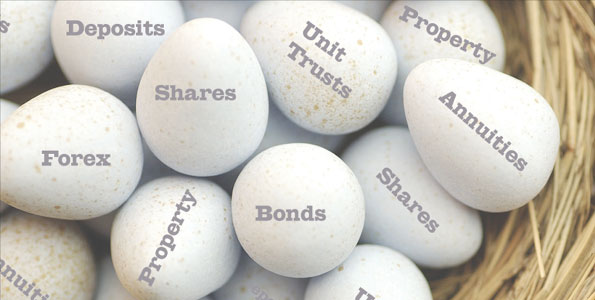by Craig McFadzean and Christopher Crowe, Turn8 Partners
After a solid start to 2014 the markets seemed to have a 10-day heart attack to finish off the month. The good news for clients is that everyone made money in January despite the markets losing. Below is the chart of the VIX, which is the volatility measure for the stock market. It looks a little like an EKG with the recent spike up to ~21.

The VIX is quoted in percentage points and translates, roughly, to the expected movement in the S&P 500 index over the next 30-day period, which is then annualized. The VIX historically has averaged a little over 20, which highlights the complacency we’ve witnessed the last year with the VIX hovering between 13 and 15. Historically the VIX has averaged a little over 20, which highlights the complacency we’ve witnessed the last year with the VIX hovering between 13 and 15.
In our 2014 Outlook piece released a month ago we called for the first half of 2014 to be more volatile with a chance of a 10% pull back, but for 2014 to be another good year with returns in the high teens. We didn’t expect things to happen so quickly.
What Happened?
There was no one thing and nothing new that caused the markets to panic. It appears as though it was more the “Perfect Storm” of many items compounding one another that lead to the significant downward momentum and the ~7% drop from the January highs. Investors were basically looking for an excuse to sell.
The items that lead investors to sell off:
- Markets in General:
- The run up over the last couple of years had many looking for a pull back and therefore a pent-up urge to sell. Additionally, investors were carrying significant unrealized gains that they were more willing to take now that we are in New Year versus selling in December due to tax reasons.
- The US:
- There were several known items such as the February switch over from Ben Bernanke to Janet Yellen as head of the Federal Reserve, the looming debt ceiling limit (once again), and the Fed’s plan to continue reducing their easing program by decreasing their monthly bond purchases another $10 billion.
- Quarterly/Year End Earnings:
- Companies by-and-large released fairly good Q4 numbers, but a few firms announced a more cautious tone regarding their outlook as year-over-year comparables become increasingly difficult and governments become less accommodative.
- Emerging Market Contagion:
- The biggest news item that came out of the blue was the economic and financial panic in several emerging markets such as Turkey, South Africa, Argentina, and others. There was a significant fear of contagion that the problems in these emerging markets would flow to others resulting in overall global GDP to drop. The problem countries saw the value of their currency dramatically drop, capital flee the country, stock markets drop sharply, and their governments drastically raising interest rates to try and hang on. E.g., Turkey raised its overnight rate 4.25% to 12%.
What’s Scary?
What we find scary is how intertwined the global market place has become. There seems to be nowhere to hide anymore as all markets are correlated and a sneeze in one can cause all to fall.
What on earth does Turkey have to do with the US market anyway? This is the question many were asking a few weeks back.
To answer this we have to look back to May 2013 when Ben Bernanke announced that the Fed saw a healthier US economy so they would likely slow down their Quantitative Easing (QE) before the end of the year. In September they followed through by reducing their stimulus-creating monthly bond purchases by $10 billion, to $75 billion. They then did the same this past month by reducing purchases by another $10 billion. What amazes us are two things. First, this has all been telegraphed and yet causes panic; both in September and again a few weeks ago. Second, a rather insignificant short-term change compared to the size of the first QE programs that were in the trillions of dollars has caused such a ripple through the global economy. This small reduction in cash injected in the US economic system is what is believed to have caused the turmoil in the emerging markets. Less money in American’s pockets means less buying globally and therefore less exporting from these emerging countries, which in turn causes their economies to suffer.
This globalization is worrisome to us because it leads us to believe we should expect much greater market volatility for years to come. The precarious nature of the global economy creates a fine line between calm growth and spasm-like heartaches driven by fear.
What’s Reassuring?
The last three weeks can also provide reassurance that the current bull market is in tact and wants to climb higher. Despite the fear and the negative headlines, it’s positive to see so many buyers jump into the market so quickly. Once the negativity was flushed through the system, the fundamentals of the market (higher GDP growth, lower unemployment, and strong earnings, etcetera) kicks in and we are once again at ease. Flushing the system like this is healthy for continued growth.
Have a look at the two charts below. The first is the S&P500 with its Bollinger Bands, which represent two standard deviations above and below the 50-day moving average. You can see how we quickly went from high relative valuations to oversold.

The second chart plots the S&P500 and the percentage of companies trading above their 20-day averages. This too shows how we quickly went from high valuations with more than 80% of the companies trading higher than their averages to less than 20% of the companies.

What we’ve done?
Long-Term Model – Global Alpha
We remain status quo given we believe the long-term bull cycle should continue through the year.
Medium-Term Model – Core Equity
We made a couple of tweaks, but remain invested. We got out of our Japan holding and added to our US Technology & US Financial sectors because we believe the US will continue to provide the best risk-adjusted return. The technology sector is healthy with a good combination of growth characteristics and rock solid balance sheets while the US Financials continue to rebound and should benefit from rising interest rates. We also added exposure to Mexico as an emerging market holding. It was dragged down with all the global emerging markets, but shows no signs of the challenges the others face. They have a stable government, high GDP growth, lower debt, and controlled inflation outlook.
Short-Term Model – Swing
This only makes up a small percentage of an account but allows us to protect capital. We had an overweight to the equity market for a while and pulled this back during the slide because our primary focus is to protect capital and several technical signals broke down at the end of January. This technical and momentum breakdown indicated the market could fall another 10% very quickly and enter bear market territory. We’ve since rolled back to a neutral equity position as the VIX has calmed down and the technical charts have held at a support level versus dropping to the next support level.
What’s Next?
We expect the speed and significance of the latest drop to help lead the market higher and let the Bull Run continue. The mini-crisis helped get everyone’s attention after being too complacent for too long. It’s like trimming dead wood. However, the recent swing does demonstrate the type of volatility we can expect this year and we believe we’ll see at least a couple more snapbacks like this over the coming quarters.
***
ABOUT TURN8 PARTNERS
Turn8 Partners is a discretionary investment management firm providing comprehensive Wealth Management Advice and Investment Services to exclusive clientele in Canada and the United States. Combining forward-thinking solutions, based on a professional foundation, we implement and manage customized wealth management strategies to ensure the realization of our client’s goals.
DISCLAIMER
The information above is not directed to any person in any jurisdiction where (by reason of that person's nationality, residence or otherwise) the publication or availability of the information is prohibited. The contents have been prepared to provide you with general information only and do not constitute any investment recommendation. In preparing the information, we have not taken into account your objectives, financial situation or needs. Before making an investment decision, you need to consider whether this information is appropriate to your objectives, financial situation and needs. The information contained herein has been obtained from sources that we believe to be reliable, but its accuracy and completeness are not guaranteed. Any examples shown are purely hypothetical and have been included for demonstrational purposes only. Past investment performance is not indicative of future investment performance and the value of investments and the income from them can fall as well as rise and are not guaranteed. You may not get back the amount originally invested. Any reference to returns linked to currencies may increase or decrease as a result of currency fluctuations. Any references to tax treatments depend on the circumstances of the individual client and may be subject to change in the future. Nothing provided should be constituted as an offer or invitation to anyone in any jurisdiction where such offer or invitation is not lawful, or in which the person making such offer or invitation is not qualified to do so, nor has it been prepared in connection with any such offer or invitation. We reserve the right at any time and without notice to change, amend, or cease publication of the information. For further information please contact us.
Copyright © Turn8 Partners















